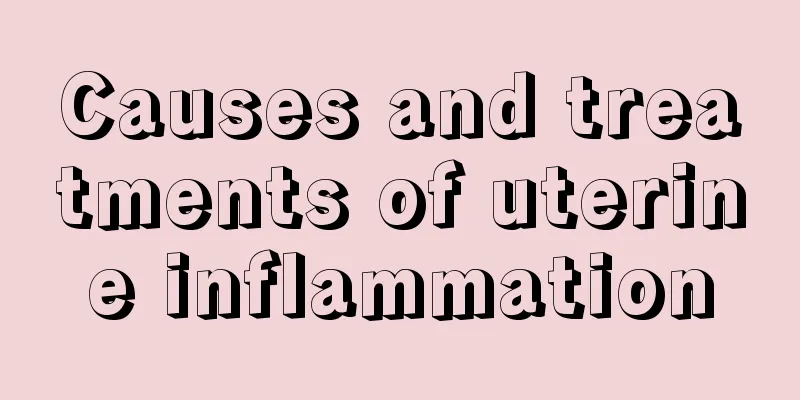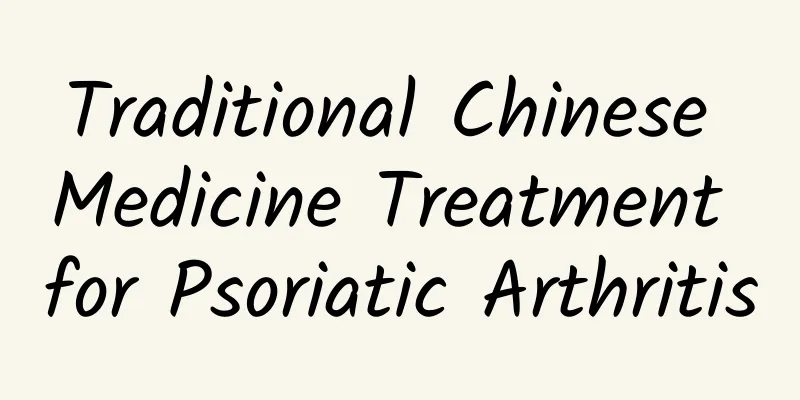Causes and treatments of uterine inflammation

|
The uterus is an organ that produces menstruation and nurtures the fetus. It is also a very important organ for every woman. It plays an important role in helping women realize their dream of becoming mothers. However, as age increases, the uterus will always experience various inflammations and may even develop serious diseases such as uterine cancer. The uterus is really a blessing and a curse for women. So what causes uterine inflammation? How should women be treated when they have inflammation? Causes of uterine inflammation: First, although the endometrium is shed periodically, its basal layer does not shed with it. Once the basal layer is chronically inflamed, it can infect the functional layer of the endometrium for a long time, leading to chronic endometritis. The existence of tuberculous endometritis has the same mechanism. Second, long-standing salpingo-oophoritis or severe cervicitis can lead to chronic endometritis. Third, intrauterine contraceptive devices can cause chronic endometritis. Fourth, a small amount of placenta remains after delivery or abortion, or incomplete restoration of the placental attachment part is often the cause of chronic endometritis. 5. For women after menopause, due to the significant decrease in estrogen levels in the body, the endometrium and vaginal mucosa become thinner and more susceptible to invasion by pathogens, leading to inflammation. Clinically, senile endometritis and vaginitis often coexist. Treatment (1) Empirical antibiotic treatment For patients with the following high-risk factors for sexually transmitted diseases (such as age under 25 years, multiple or new sexual partners, and unprotected sexual intercourse), empirical antibiotic treatment against Chlamydia is used before the results of pathogen testing are obtained. (2) Antibiotic treatment targeting pathogens For those who have acquired pathogens, choose antibiotics targeting the pathogens. Since Neisseria gonorrhoeae infection is often accompanied by chlamydial infection, if it is gonococcal cervicitis, in addition to using anti-Neisseria gonorrhoeae drugs, anti-chlamydial infection drugs should also be used during treatment. |
>>: What are the symptoms of vaginal inflammation? Be careful if it hurts here!
Recommend
What are the side effects of anesthetics for caesarean section
Nowadays, more and more pregnant women are underg...
Information for cataract patients: Choice of intraocular lens
Currently, cataracts are treated by replacing the...
How to protect the fetus when pregnant women have threatened miscarriage
For pregnant women, threatened miscarriage is an ...
How many weeks of pregnancy can I have an abortion?
In the case of unexpected pregnancy, or if you no...
Prevention and treatment of hay fever
Before we know it, spring has quietly arrived. Ho...
Recommended women's perfume
Eau de toilette is one of the most common daily n...
How long does it take for a boil on the vulva to heal?
The symptom of vulvar boils is mainly caused by o...
How to maintain the uterus, eat these foods to maintain the uterus
The importance of the uterus to women is self-evi...
In a few words: Turtle Breathing Technique PK, use it if you can, which one is the secret to longevity?
Niu Niu: A fellow researcher left a message askin...
What can women eat to replenish their yang deficiency the fastest?
The most obvious physical characteristic of women...
Can I eat duck meat during confinement?
After giving birth, you will immediately enter th...
How do I know if the high-speed rail ticket I bought is an electronic ticket? How do I enter the station with an electronic high-speed rail ticket?
In 2020, the high-speed rail electronic ticket wi...
Professor Zhi Xiuyi's message lights up the road to fighting cancer, and the 2021 lung cancer patient story documentary will be released soon
Your browser does not support the video tag Colle...
In the beginning of the school year, in addition to Norovirus, we should also be careful of influenza A...
Recently, some schools in Ningbo, Jinhua and Tian...
Pregnant women have a lot of small bumps on their hands and feet, which are very itchy
Urticaria is a type of skin allergy symptom, whic...









